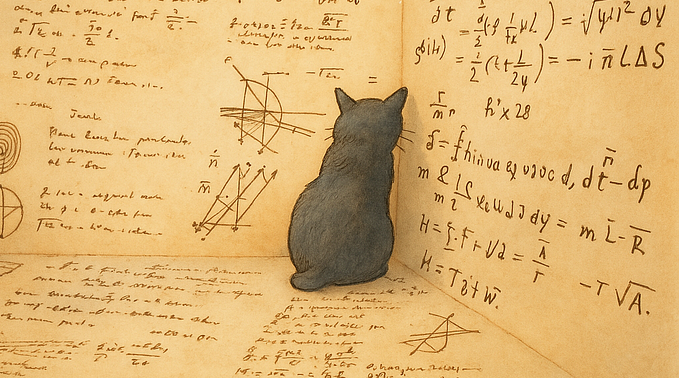
One of the most accomplished American sculptors, Greg Wyatt, described by Professor Sir Stanley Wells as America’s Rodin, decided to donate two new bronze sculptures of the Italian astronomer Galileo Galilei to my office at Harvard University. Last week, I removed all the file cabinets from my office to clear out extra walk-around space for these 3D sculptures, which are the size of a person. This was the biggest face-lift that my office received over my 32 years at Harvard.
In partnership with Greg, we are planning a special unveiling event in February 2025, which will feature a musical performance by the Artist in Residence of the Center for Astrophysics | Harvard & Smithsonian, the talented composer David Ibbett.
This week is special, as it marks exactly 415 years to the discovery of Jupiter’s moons, which is the inspiration for one of Greg’s sculptures.
On January 7, 1610, Galileo used his new homemade telescope to observe Jupiter. He noticed three other points of light near Jupiter, and at first considered them to be distant stars. After several nights, Galileo noticed that these lights remained around Jupiter unlike background stars that drifted away. Four days later, he observed a fourth point of light near Jupiter exhibiting a similar behavior. By January 15, 1610, Galileo concluded that these are four moons orbiting Jupiter. The observation that these moons orbit Jupiter and not the Earth validated the assertion by Nicolaus Copernican seven decades earlier that the Earth is not at the physical center of the cosmos.
Galileo published his discovery a couple of months later in a book titled “Siderius Nuncius,” which translates to: “The Starry Messenger.” Four years later, the German astronomer Johannes Kepler suggested calling these 4 moons after mythological names related to Jupiter, namely Io, Europa, Ganymede, and Callisto, but his proposal gained traction only two centuries later. By now, astronomers have identified 95 moons around Jupiter.
Among the Galilean satellites, Europa is believed to have a subsurface ocean of liquid water that might host life. Last October, NASA launched the Europa clipper orbiter, scheduled to reach Europa by April 2030. Subsequently, the spacecraft will conduct 49 flybys of Europa during its four-year mission. The Europa Clipper carries nine instruments, including imaging systems and a radar, to better understand the structure of Europa’s icy crust.
Galileo’s remarkable insight is the inspiration for the Galileo Project in search for extraterrestrial artifacts near Earth. The anomalous interstellar object, `Oumuamua, triggered my interest in this search, since it represents “A Messenger from the Stars” in analogy to Galileo’s “The Starry Messenger.” A discovery of an alien technological object will suggest that Earth does not constitute the technological hub of the cosmos. By summer 2025, we plan to use three Galileo Observatories as well as the Rubin Survey Telescope to monitor the sky for anomalous interstellar objects.
The Galileo Project’s research team is also planning to visit the crash site of the first recognized interstellar meteor, IM1, in search for large pieces of the original object. The fireball’s location in the Pacific Ocean (outside the territorial waters of Papua New Guinea) was identified by the U.S. Space Command based on data from U.S. Government satellites. This meteor came from outside the solar system at a speed of about 60 kilometers per second, faster than 95% of all stars in the vicinity of the Sun. It also exhibited material strength tougher than all meteors documented by NASA, and so our research team would like to check whether it was an alien artifact by retrieving large pieces of it. To achieve this goal, we reserved the Nautilus ship which will be near IM1’s crash site in August 2025 and is equipped with a Remotely Operated Vehicle (ROV) that can pick up large pieces from the ocean floor based on a video feed to the ship. The ROV constitutes a robot that will be operated by our engineers from the ship’s deck. A similar study of an interstellar object that does not collide with Earth, would cost billions of dollars, a thousand times more than this planned expedition. Any potential donor who is interesting in joining this expedition should contact me within the coming week, before we finalize our plans.
Altogether, the Galileo research team is working around the clock to collect evidence on a smarter kid on our cosmic block, based on the scientific method pioneered by Galileo Galilei 415 years ago. As Oscar Wilde noted: “Imitation is the sincerest form of flattery.”
If our neighboring scientific civilizations had their own version of Galileo billions of years ago, their head-start might trigger a laugh as they see through their probes how far humanity got so far.
ABOUT THE AUTHOR

Avi Loeb is the head of the Galileo Project, founding director of Harvard University’s — Black Hole Initiative, director of the Institute for Theory and Computation at the Harvard-Smithsonian Center for Astrophysics, and the former chair of the astronomy department at Harvard University (2011–2020). He is a former member of the President’s Council of Advisors on Science and Technology and a former chair of the Board on Physics and Astronomy of the National Academies. He is the bestselling author of “Extraterrestrial: The First Sign of Intelligent Life Beyond Earth” and a co-author of the textbook “Life in the Cosmos”, both published in 2021. The paperback edition of his new book, titled “Interstellar”, was published in August 2024.







